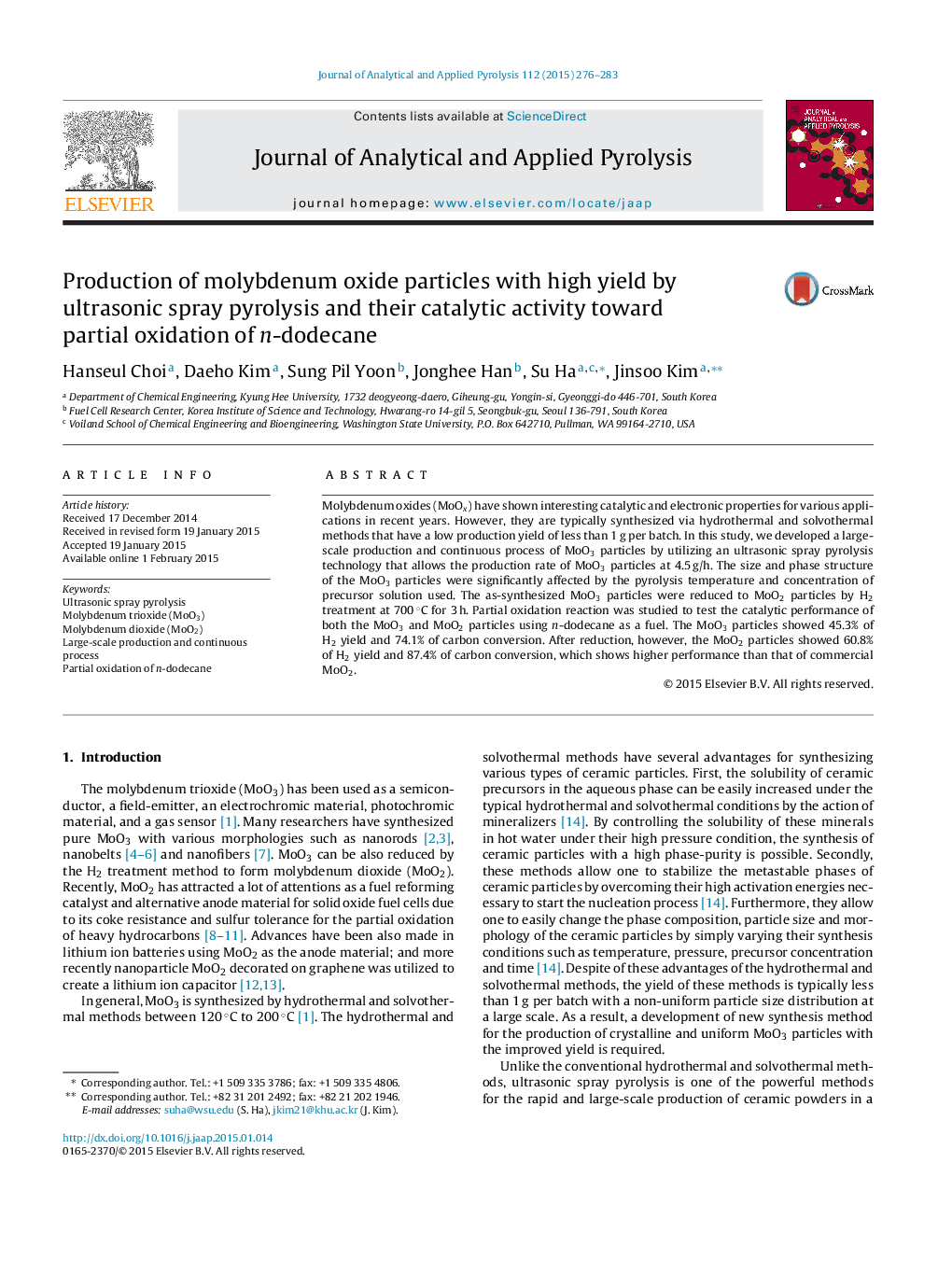| Article ID | Journal | Published Year | Pages | File Type |
|---|---|---|---|---|
| 1197243 | Journal of Analytical and Applied Pyrolysis | 2015 | 8 Pages |
•An ultrasonic spray pyrolysis used to continuously produce MoO3 at a rate of 4.5 g/h.•Both size and phase of MoO3 were significantly affected by pyrolysis temperatures.•Both size and phase of MoO3 were significantly affected by precursor concentrations.•MoO2 showed 61% H2 yield and 87% C conversion for partial oxidation of n-dodecane.
Molybdenum oxides (MoOx) have shown interesting catalytic and electronic properties for various applications in recent years. However, they are typically synthesized via hydrothermal and solvothermal methods that have a low production yield of less than 1 g per batch. In this study, we developed a large-scale production and continuous process of MoO3 particles by utilizing an ultrasonic spray pyrolysis technology that allows the production rate of MoO3 particles at 4.5 g/h. The size and phase structure of the MoO3 particles were significantly affected by the pyrolysis temperature and concentration of precursor solution used. The as-synthesized MoO3 particles were reduced to MoO2 particles by H2 treatment at 700 °C for 3 h. Partial oxidation reaction was studied to test the catalytic performance of both the MoO3 and MoO2 particles using n-dodecane as a fuel. The MoO3 particles showed 45.3% of H2 yield and 74.1% of carbon conversion. After reduction, however, the MoO2 particles showed 60.8% of H2 yield and 87.4% of carbon conversion, which shows higher performance than that of commercial MoO2.
